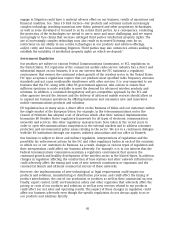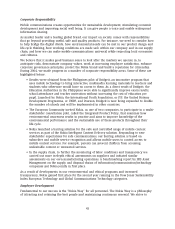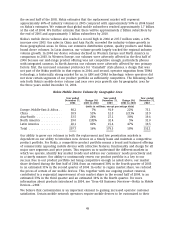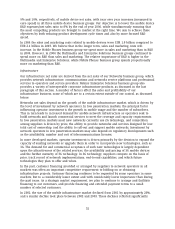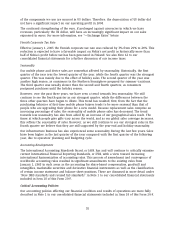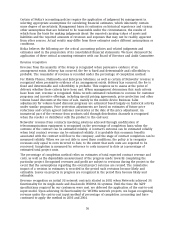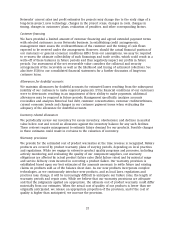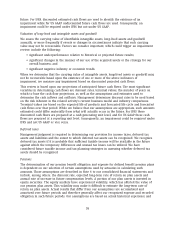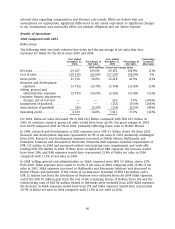Nokia 2004 Annual Report Download - page 51
Download and view the complete annual report
Please find page 51 of the 2004 Nokia annual report below. You can navigate through the pages in the report by either clicking on the pages listed below, or by using the keyword search tool below to find specific information within the annual report.specifications by requesting certain preferred features, functionalities or designs, together with
co-branding with the network operator’s brand. We are working together with these operators on
product planning as well as accelerating product hardware and software customization programs.
Of the mobile devices we plan to announce in 2005, approximately 90% are expected to offer a
range of customization options. See ‘‘Item 4.B Business Overview—Industry Development and
Trends’’ for more information on the mobile industry’s development and trends.
We continue to see sales growth opportunities in the mobile voice market where we intend to
focus on markets with low mobile penetration and in higher penetration markets on features and
functionalities designed to increase the use of mobile voice by consumers and enterprises. In
addition, the convergence in some areas of the mobile communications, information technology,
media and consumer electronics industries is leading to the creation of new mobile devices,
services and ways to use mobile devices. This together with the open standards and specifications
and interoperability are driving expansion from voice-based communications towards new
data-driven areas and applications in consumer multimedia and enterprise mobility solutions.
These developments also support further opportunities in mobile voice. Our reorganization at the
beginning of 2004 is designed to better position each of our three mobile device business groups
to meet the specific needs of these diverse market segments.
In 2005, we expect to see continued demand for advanced products, such as camera phones,
smartphones and other mobile multimedia devices and services. In the short term, we believe the
most significant opportunities are in mobile imaging and smartphones. In 2004, Nokia was a clear
leader in the smartphone market, a position that it intends to maintain in 2005. Our long-term
focus areas, where we expect important business opportunities to develop, include music, mobile
games and mobile TV.
The enterprise market is emerging as an opportunity for the mobile communications industry.
Businesses are just beginning to realize the potential productivity gains, cost savings and
competitive advantages enabled by secure mobile voice, data and business applications. With our
Enterprise Solutions business group we intend to capture profitable segments of the enterprise
market by offering products and services designed to help enterprises improve performance by
extending their use of mobility with a diverse range of mobile devices, mobile applications and
security, as well as service and support. See ‘‘Item 4.B Business Overview—Industry Developments
and Trends.’’
Many of the businesses that the Multimedia and Enterprise Solutions business groups are targeting
are new to us or still in the early stages of development. For instance, through our Multimedia
business group we have made significant investments in the area of mobile games. As the games
industry has different dynamics than the mobile device market we face some new challenges in
this segment. In January 2005 we announced that we are streamlining research and development
activities in our Multimedia business group and this has been leading to restructuring of the R&D
activities in the games business unit. However, we believe that the games business is still in an
early phase of development, and in the longer term we continue to see great potential in the
games business and expect to introduce several new mobile games in 2005. Pursuing business
opportunities in these segments means that we will have to compete with a variety of
competitors and face new uncertainties and risks. For more information, please see the first and
fifth risk factor in ‘‘Item 3.D Risk Factors.’’
As stated above, we estimate that in 2005 the mobile device industry will grow approximately
10% in volume from 643 million units in 2004. The value is expected to grow less in 2005 as we
anticipate the industry average selling prices, or ASPs, to decline somewhat compared with 2004.
Industry ASPs are driven primarily by three factors: mix shifts, price erosion and industry
competition.
50




